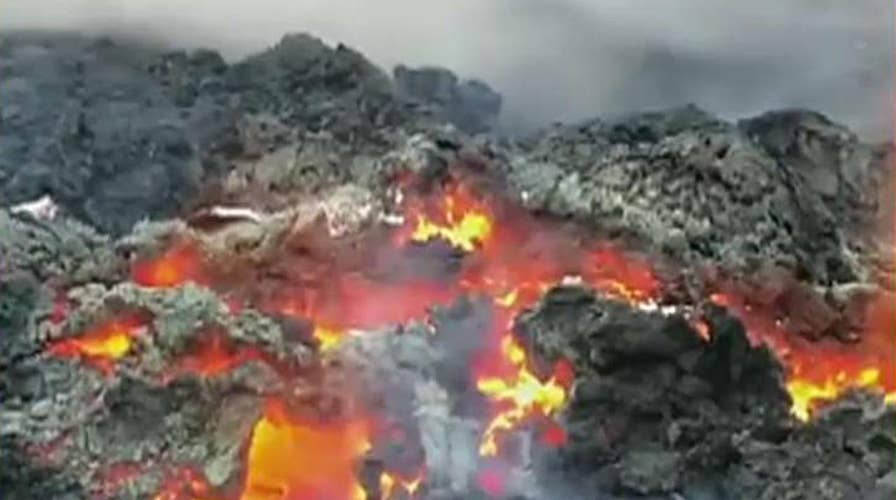Scientists warn of potential explosive eruptions in Hawaii
As lava level falls, geologists say the risk of a big blast at the Kilauea volcano will climb in the weeks ahead; Mika McKinnon, geophysicist and disaster researcher, explains.
PAHOA, Hawaii – Geologists warned Wednesday that Hawaii's Kilauea volcano could erupt explosively and send boulders, rocks and ash into the air around its summit in the coming weeks.
The risk will rise as lava drains from the summit crater down the flank of the volcano, and explosions could occur if the lava drops below the groundwater level, the U.S. Geological Survey said.
There's also potential for ash, steam and sulfur dioxide emissions.
Kilauea is one of the world's most active volcanoes.
It has destroyed 36 structures since it began releasing lava from fissures that opened in a Big Island neighborhood about 25 miles (40.2 kilometers) east of the summit crater. There are now 15 of the vents spread through Leilani Estates and neighboring Lanipuna Gardens.
In the weeks ahead, the volcano could eject blocks up to 2 yards (1.8 meters) in diameter a little less than a mile (1.6 kilometer) away, the USGS said. It may also send pebbles shooting into the air several miles away, the USGS said.
The receding lava lake resembles conditions seen before a major summit eruption in 1924, said Tina Neal, scientist-in-charge at the USGS Hawaiian Volcanoes Observatory.
That explosion killed one person and sent rocks, ash and dust into the air for 17 days.
This event could occur again when the lava lake drops so low that groundwater is able to flow into the conduit that feeds magma to the summit crater. The magma would heat the water, sending steam into the air that would push any accumulated rocks out in an explosion.
Don Swanson, a geologist with the Hawaiian Volcano Observatory, said the magma is likely to drop below the water table around the middle of the month. Scientists don't know how long after that it an explosion could occur.
"We suspect it's a rapid process. We really don't know for certain," he told reporters on a conference call.
No one lives in the immediate area of the summit crater. The Hawaii Volcanoes National Park, which includes the crater and surrounding region, announced Wednesday that it will shut down Friday in anticipation of the possible explosive event.
"It seems pretty safe to me right now but they'd know best," said Cindy Woodd, who was visiting from British Columbia, Canada. "We don't know what's going on underground. Life and safety is what's most important."
Separately, Hawaii Gov. David Ige said a geothermal energy plant near the lava outbreak was accelerating its removal of stored flammable gas.
The Puna Geothermal Venture plant has about 50,000 gallons (189,270 liters) of pentane on site but he expected this would all be removed by the end of the day Thursday.
It would be "very, very hazardous" if a volcanic vent were to open under the facility where the fuel is stored, the governor said.
The plant, which is owned by Ormat Technologies of Reno, Nevada, is across the highway from where lava has been erupting.
Authorities previously ordered nearly 2,000 residents to leave the neighborhoods in and around the vents in the mostly rural district of Puna. But some ignored the order and stayed to watch over their property. Authorities went door-to-door in Lanipuna to get people out of their homes on Tuesday.
Police said Wednesday they arrested a man suspected of burglarizing homes in Leilani Estates. A resident saw the man leaving his house when he returned to retrieve personal belongings. The resident and a friend took the suspect to police officers who arrested him.
Some residents have refused to follow evacuation orders because of fears their homes will be looted.
___
Associated Press journalists Caleb Jones, Haven Daley and Jennifer Sinco Kelleher contributed to this report.


